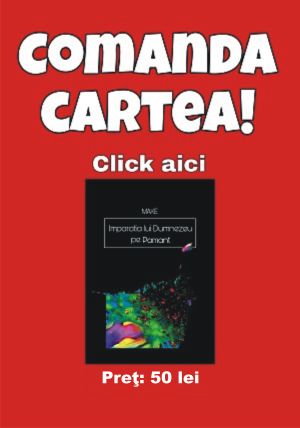Freedom was wider before the COVID-19 pandemic, and now we hardly remember that until the year 2020 we lived completely differently. Moreover, epidemics had a profound impact on the history of humanity, shaping the course of civilizations and influencing social, economic and political dynamics.
Throughout the centuries, humanity has faced various pandemics that have profoundly influenced society, bringing major changes and causing great suffering. One thing is certain, humanity is exposed to infectious diseases (contagious diseases, caused by infectious, transmissible agents, which can be microbes, viruses, mono- or multicellular parasites or protein fractions, peptides, which affect humans, animals, plants, insects , even bacteria. In the case of humans, they enter the body through certain "gates of entry", being transmitted directly, from person to person, or through vectors).
The two great pandemics that hit the world before the 21st century are brought up again, but now the pandemic that started in 2020 is also mentioned.
This summer there was intense talk about a new increase in the number of people infected with COVID-19. The news on this topic caused quite a lot of emotion, because the events of the last four years left deep traces in the collective psyche.
• The Black Plague: A global catastrophe
One of the most devastating epidemics in human history was the Black Death, which struck Europe beginning in 1348. It was the most devastating plague ever recorded, killing an estimated 75 million people globally, of which 25 millions in Europe alone. This meant almost half of the population of the European continent at that time. The plague (plague) is a disease produced by the bacterium Yersinia pestis and is transmitted from rats to humans, through the bites of fleas that feed on the blood of both species, through direct contact or, exceptionally, through inhalation. Plague is a serious zoonotic infectious disease also known as the "black death". The rapid spread of the plague was facilitated by booming trade networks, with the disease spreading from Asia, through Mongolia and northern China, to Europe. In our space, the plague left deep traces, affecting the population along several epidemic waves. The chronicler Grigore Ureche mentions the plague of 1522, which caused "great murder", and the one of 1578, during the reign of Petru Şchiopu, was also devastating. History records that, between 1349 and 1526, there were no less than 25 outbreaks of the plague in our region, each episode bringing significant loss of human life. According to Historia, another tragic episode in our history is the "Plague of Caragea" (1812-1814), which affected Wallachia. Estimates show that over 90,000 people died, of which 40,000 in Bucharest alone. This epidemic emphasized the vulnerability of communities to infectious diseases and the lack of effective means of prevention and treatment of these diseases.
In addition to the plague, in the medieval period, other infectious diseases had a significant impact on the population, including cholera and leprosy. Cholera, a bacterial disease transmitted through contaminated water, has continued to take its toll in modern times, especially in countries in Asia and South Africa. Leprosy, a chronic infectious disease, has also affected the population over the centuries, and in Romania there are still isolated cases, such as the case of the patients from Tichilesti, Tulcea county.
Read here - Two doctors premeditatedly killed a patient from the ATI ward of Saint Pantelimon Hospital
In global history, epidemics have often played a decisive role in conquests and cultural changes. Especially in the context of the colonization of the New World by Europeans, diseases brought from Europe, such as smallpox, had a devastating impact on the indigenous populations. Estimates suggest that disease, combined with military and colonial actions, reduced the indigenous population by 70% to 90% in the 16th century. Although there are theories suggesting that epidemics were deliberately used as biological weapons, history does not confirm this hypothesis decisively. In reality, diseases often spread unchecked, and the devastating effects were largely the consequence of the indigenous populations' lack of immunity to European diseases.
• Spanish Flu: A scourge of the 20th century
Another devastating pandemic that left deep traces in the 20th century was the Spanish Flu of 1918-1919. This was an influenza pandemic caused by an H1N1 virus that spread rapidly around the globe at the end of the First World War. With an estimated number of 50-100 million victims, the Spanish flu affected almost a third of the world's population, according to unibuc.ro, making it one of the deadliest pandemics in history. The Spanish flu was particularly lethal among young adults, an age group that is not usually severely affected by seasonal flu. The effects of the pandemic were amplified by the poor hygiene and public health conditions that existed after the war, as well as by the massive mobilization of the population during the conflict, which facilitated the rapid spread of the virus. The impact of the Spanish flu was also felt in Romania, where the authorities had to implement strict measures to limit the spread of the disease. The hospitals were overwhelmed by the large number of patients, and the lack of medical resources aggravated the situation.
Read here - Criminal files on deaths from ATI, blocked by lack of medical experts
• Pandemics and Social and Cultural Changes
The current COVID-19 pandemic, which has engulfed almost the entire world, has brought to the fore the global vulnerability to infectious diseases and highlighted the importance of public health measures. Although often compared to the great epidemics of the past, this pandemic is distinguished by the extent of its global spread and by the complex economic and social impact it had. The COVID-19 pandemic, also known as the coronavirus pandemic, began in 2019 in Asia. The new virus was first identified following an outbreak in Wuhan, China, in December 2019. Attempts to contain it there failed, allowing the virus to spread to other areas of China and later around the world. The World Health Organization (WHO) declared the outbreak a public health emergency of international concern on 30 January 2020 and a pandemic on 11 March 2020. By 2023, there were 680 million officially recorded cases and 6.8 million confirmed deaths .
It is clear that epidemics have played a central role in human history, changing the course of events and reshaping societies. From the Black Plague that ravaged medieval Europe, to the Spanish Flu that affected the 20th century, and more recent epidemics like COVID-19, these events remind us of our vulnerability to infectious diseases and the importance of public health measures. At the same time, they caused profound cultural and social changes, influencing the destiny of civilizations and leaving deep traces in human history.
Researchers from the Universities of Oxford, Leeds and Arizona analyzed dozens of previous long-running Covid studies to examine the number and range of people affected, the mechanisms underlying the disease, the many symptoms patients develop and possible treatments. Long-lasting Covid, also known as post-Covid-19 illness, is generally defined as symptoms that persist for three months or more after an acute infection with SARS-CoV-2, the coronavirus that causes the disease. The disorder can affect and damage many organ systems, leading to severe and long-term impairment of function and a wide range of symptoms, including fatigue, cognitive impairment (often referred to as "brain fog"), breathing difficulties and pain. Long-lasting Covid can affect almost anyone, including all age groups and children. Surprisingly, the rate of long-term Covid in the most deprived fifth of the UK population, for example (3.2%) is twice that of the least deprived fifth (1.5%). Women are slightly more likely than men to be affected. Researchers have found that while some people gradually recover from long-lasting Covid, in others the condition can persist for years. Many people who developed prolonged Covid before vaccines are still sick. If a person has been fully vaccinated and has up-to-date booster shots, the long-term risk of Covid is much lower. However, 3-5% of people still develop long-lasting Covid after an acute infection with the novel coronavirus. In the UK alone, prolonged Covid affects around 1.8% of the population, and 71% of people with the condition have had it for more than a year. The study also found that a wide range of biological mechanisms are involved, including persistence of the original virus in the body, disruption of the normal immune response and microscopic blood clotting, even in some people who had only mild initial infections. There are still no proven long-term treatments for Covid, and current management of the condition focuses on ways to relieve symptoms or ensure rehabilitation.
Experts say there is an urgent need to develop and test biomarkers (eg blood tests) to diagnose and monitor prolonged Covid and to identify therapies that address the root causes of the disease. The population can reduce their risk of developing long-term Covid by avoiding infection (for example, by wearing a mask in crowded indoor spaces), by promptly taking antivirals if they get sick with Covid-19, by avoiding intense physical exercise in during such infections and by ensuring that they are up to date with the vaccines and boosters against Covid-19. "Long-term Covid is a grim condition, but there are reasons for cautious optimism. Various treatments based on the mechanism are being tested in research studies. If they prove effective, they would allow us to target specific subgroups of people with precision therapies," said Trisha Greenhalgh, Professor of Primary Care Health Sciences at the Nuffield Department of Primary Care Health Sciences in Oxford. Beyond treatments, it is becoming increasingly clear that in terms of long-term Covid, the condition represents an enormous social and economic burden on individuals, families and society, she says. The research, titled "Long-lasting Covid: a general clinical update," was published in The Lancet journal.
---------------
A team of researchers, led by the University of Houston, United States, discovered two new ways to prevent and treat respiratory viruses. In two consecutive articles published in the journal Nature Communications, the Texas lab reports the development and validation of NanoSTING, a nasal spray, as a broad-spectrum immune activator for infection control against several respiratory viruses; and the development of NanoSTING-SN, a pan-coronavirus nasal vaccine that can protect against infection and disease of all members of the coronavirus family. NanoSTING is a special formulation that uses tiny droplets of fat to deliver an immune-boosting ingredient called cGAMP. This formula helps the body's cells to remain on high alert to prevent the attack of respiratory viruses. As seen after the recent Covid-19 pandemic, the development of commercially available treatments to counter respiratory viruses is a largely unsolved problem with a huge impact on people's lives. "Our results showed that intranasal administration of NanoSTING is capable of eliciting beneficial type I and type III interferon responses that are associated with immune protection and antiviral benefit," says first author and postdoctoral associate Ankita Leekha. The authors also show that NanoSTING can protect against Tamiflu-sensitive and -resistant strains of influenza, highlighting its potential as a broad-spectrum therapy. "The ability to activate the innate immune system presents an attractive way to provide protection to the population against multiple respiratory viruses, viral variants, and also to minimize transmission to vulnerable individuals," Leekha said. According to the researchers, the advantage of NanoSTING is that only one dose is required, unlike antivirals such as Tamiflu, which require 10 doses.
The mechanism of action of NanoSTING is complementary to vaccines, monoclonal antibodies and antivirals, the authors noted. Despite the successful implementation of several SARS-CoV-2 vaccines, these vaccines require constant updates due to viral evolution, plus the current generation of vaccines provides only limited protection against SARS-CoV-2 transmission. The authors also show that the nasal vaccine was 100% effective in preventing Omicron VOC transmission in unvaccinated hosts. "The ability to protect against multiple coronaviruses and variants offers the exciting potential towards a universal coronavirus vaccine," Leekha pointed out. According to the researchers, the ability to prevent infection and transmission could eventually end this cycle of viral transmission and evolution in immunocompromised people.
























































